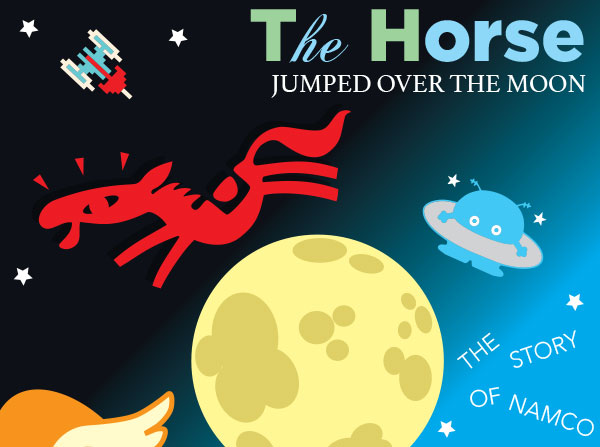
On a previous blog I mentioned that Wonder Eggs was inspired by the same history that Walt Disney looked at when he created Disneyland. The team at Namco studied the trade caravans, carnivals, pleasure fairs, and world’s expositions that predated amusement parks. They wanted the village of Laperot to have a timeless quality to it. To appeal to every generation. In order to do that they had to fill the park with updated versions of some classic experiences. For example fairs had live entertainment in the form of musicians, jugglers, clowns, and dancers. The Disney, and Universal parks were known for their live entertainment. Wonder Eggs had these things as well. Ancient fairs also had entertainment in the forms of sideshow attractions. I’m not talking about the tattooed man, or the bearded lady, but rather acts like mystics, and fortune tellers.
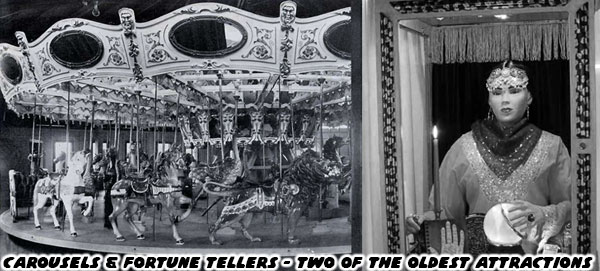
Tarot readers, and fortune tellers were a staple at classic fairs, and carnivals. These mystics were known for reading palms, letting visitors know what to expect in the future, or for the more curious who they would marry. They often traded their skills inside an ornate tent, or a caravan. For the sake of being more conscious of history remember that the term “Gypsy” was actually a slur. The correct ethnic term for many of these fortune telling traditions could be traced to the
Romani people. Please try and remember this when speaking of the culture. Romani fashion, and traditions were often caricatured by many acts. The costumed characters extending back to the renaissance inspired
the creation of arcade machines that dispensed wisdom, fortunes, and winning lottery numbers. These machines went back more than a century. There was even a version that played audio from 1904!
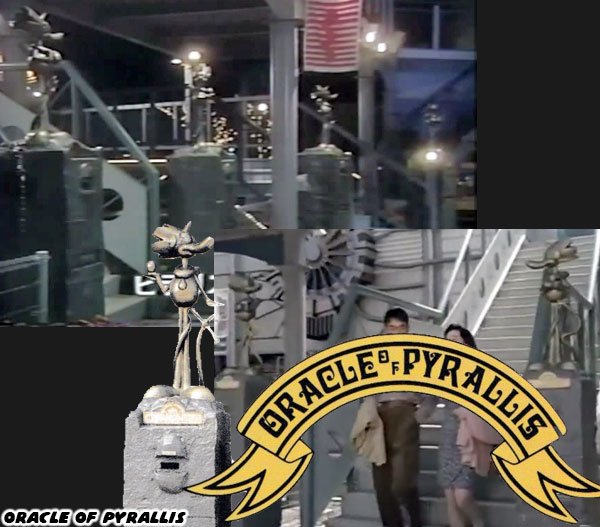
Wonder Eggs had its own unique spin on the fortune telling tradition. In this case the “servants of play” were blessed with wisdom. The Pyrallis Fortune Telling statues were their own mini attraction. Guests could insert their Wonder Ticket aka Karla Card into one of the four bronze statues. Each statue had a unique daily message. I’m certain that they were appropriate for the temperament of each Pyrallis. Not to mention that guests could only request one fortune per day. The other Pyrallis would refuse the card if it had already been used. It was not the only attraction they were in charge of.
If you listened to the Pink Monorail podcast that my wife, and I hosted then you would know that carousels were among the oldest amusement rides in the world. The carousel was originally a simulator attraction for jousting. Riders would sit on a saddle mounted over a sort of half barrel on a wheel. As they went in a circle they would try to lance a ring. This tradition of going for the brass ring was carried over to latter carousels. If you grabbed the brass ring, and were able to toss it into a hoop then you would earn a free ride.
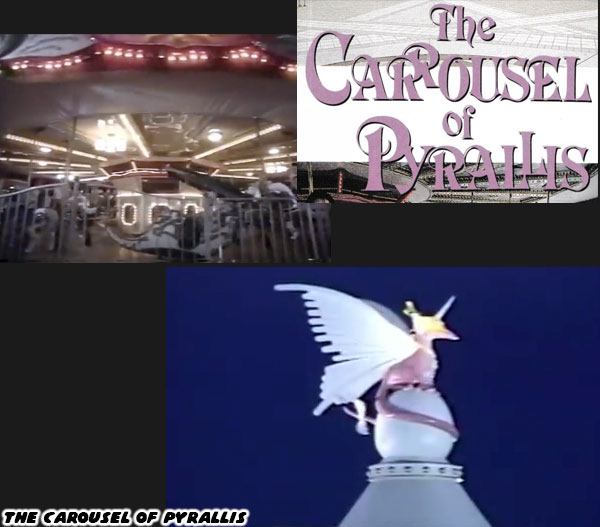
The Carrousel of Pyrallis didn’t have a brass ring, but it was nonetheless a classic attraction. Just an FYI “carrousel” was a historically accurate alternate spelling of the ride. Here was the description from the Wonder Eggs guide “A nostalgic carousel at the top of the stairs overlooking Elds Square. It has a Pyrallis (Ilinx) on its roof and is a symbol of the entire park. The night view from the carousel is also beautiful. Of course, the carousel is also lit up, and you can't help but be transported to a dream world.” My wife was happy to learn that the Carrousel of Pyrallis rotated clockwise, a tradition that started in the UK. The ones that went counter-clockwise were built later. They were more popular with the rest of Europe, and North American builders. The fortune tellers, and carrousels I’ve mentioned were carried over from ancient history, and updated for Wonder Eggs. What about popular amusement attractions from the 20th century? How did Namco incorporate those into the park?

The bumper car was invented by Theophilus Van Kannel, who also invented the revolving door.
The bumper cars that we know today could be traced back about 100 years ago to the Dodgem Corp. in Lawrence, Massachusetts. According to the Coney Island History Project One of the first bumper car rides may have been the Witching Waves at Coney Island’s Luna Park. These were motionless and propelled by undulating rollers under a flexible road.
USA Today compiled a brief pictorial history of the attraction. Witching Waves was an historical flat ride that was installed at several amusement parks worldwide. The first was at Luna Park on Coney Island, New York, United States, in 1907, where it was one of the most popular rides. Luna Park was synonymous with the first American amusement park,
and was covered on our podcast. Namco wanted to update the concept of the bumper car, and turn it into a form of play.
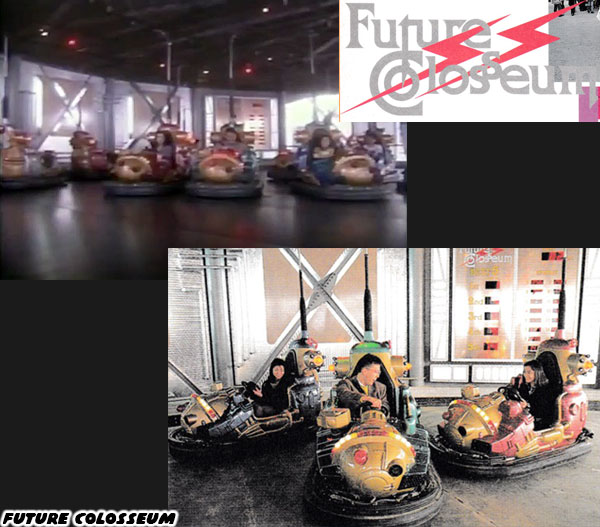
Namco turned the bumper cars into a game of tag called “Future Colosseum.” The description from the Wonder Eggs guide didn’t make much sense. “Future Colosseum” is an exciting kart battle where 16 karts violently collide with each other and compete for points. That shock when you hit it with all your might without hesitation. A futuristic cart that is sure to become addictive.” Namco gave each car a unique design. The bodies had a similar aesthetic to the Laperopter designs from Shigeki Toyama. These bodies had a function, the cars lit up with different colors when they hit each other. The way the game worked was that the cars were divided between eight “Angels” and eight “Devils.” Angels added points, and Devils deducted them. If an angel hit a devil they would earn a point, and they would turn the devil into an angel as well. Alternately Devils converted angels, and deducted points. There was an electronic scoreboard on the wall that showed the points for each player. The last 30 seconds of the ride was pure chaos as it became a free for all against everyone. Future Colosseum predated the release of the original Ridge Racer arcade game by a year. I believe it inspired the developers at Namco to make
the two best cars in the series an angel, and a devil.
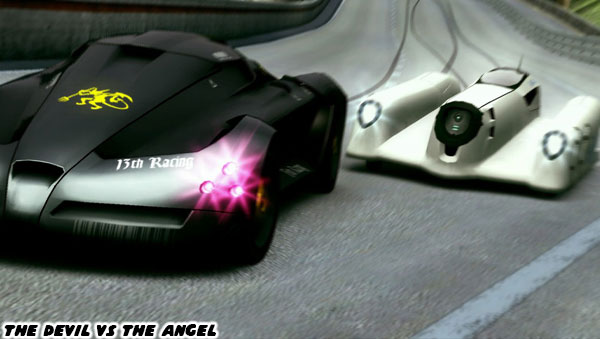
Early amusement parks had boat rides where boats followed a closed circuit on a stream. They were originally called “old mill” rides where visitors would see scenes as they passed by. They might see pirates, monsters, native villages, or other things depending on the theme of the attraction. Variations of which inspired the creation of the “tunnel of love,” and flume “log” rides. The Möbius Creek, sometimes written Moebius Creek was a classic gondola ride around Laperot village. Here was the official description “The Möbius River flows around the entire park. A romantic excursion is the water ride “Möbius Creek.“ Enjoy the park's performances to your heart's content…” mcSister magazine added “The “Eternal Sacred River” is very popular with parents and children during the day and couples at night. The concept behind the river that flows through the park is that it is a “sacred stream that continues forever.” Ride on a round gondola and stroll through a mysterious world. Möbius Creek is very popular with couples at night.”
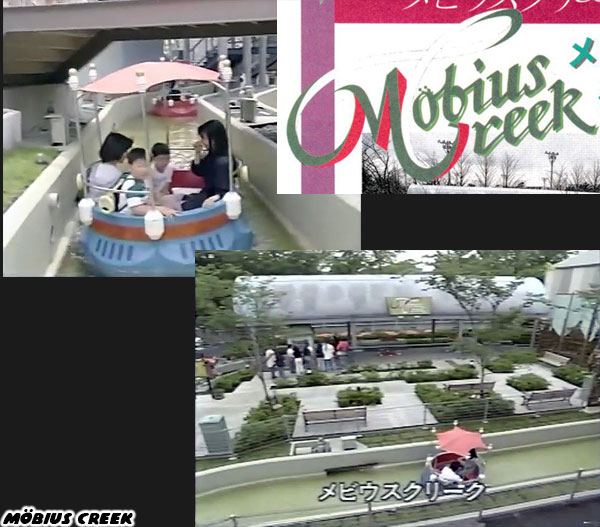
Not every attraction in the early parks were rides, or fortune tellers. Games of skill were possibly the biggest draw at every midway. A part of Laperot was named the Carnival Arcade. It had updated versions of the most popular Namco games featured in their play centers, and the original ones that they created for Expo ’90. There were nine carnival attractions in total including games like Hurry Up Chef, Wani Wani Panic Land, and Lucky Monkey. The prize at each was a small stuffed animal. These were easily the most family friendly games on the market. What I thought was really special were the coins required for play. Instead of paying for the games with the egg currency on the tickets, the dreamers could buy individual Carnival Coins. The coins could be used to play any one of the games. These coins were slightly larger than traditional arcade tokens. They were minted with a portrait of Laperot Village on one side, and engraved with
a message in “Elds Character” on the other.
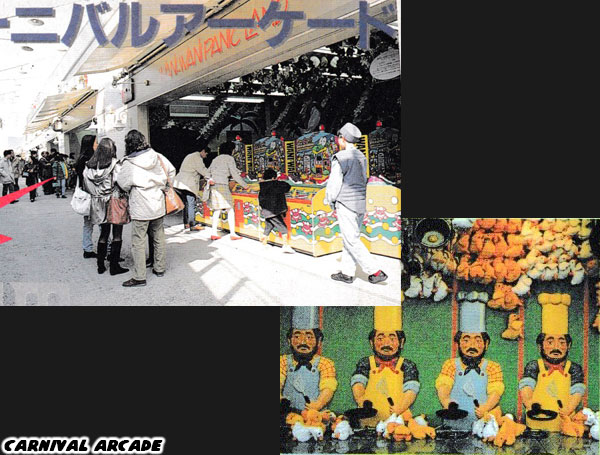
Wonder Eggs had all of the elements of a textbook fair, hometown carnival, and traditional amusement park. The introduction of Elds the Goddess of play, the Pyrallis as the servants of play, and Laperot as the village of play helped transform it into a theme park. Modern parks relied on modern technology, new attractions, new midways to pull the experience out of the past. How did Wonder Eggs find the balance for visitors? We will look at this in the next entry of the blog series. I hope to see you back for that. Were there any defunct parks that you visited? Please tell me about it in the comments section. As always if you would like to sponsor me
please visit my Patreon page and consider donating each month, even as little as $1 would help make better blogs and even podcasts!
Wonder Eggs, and Egg Empire research collected from: Wonder Eggs Guide Map, Namco Graffiti magazine, the book “All About Namco II", NOURS magazine, The Namco Museum, Namco Wiki, Ge-Yume Area 51 Shigeki Toyama Collection, mcSister magazine, first person attraction details from Yoshiki. Event details from Hole in the Socks


















No comments:
Post a Comment